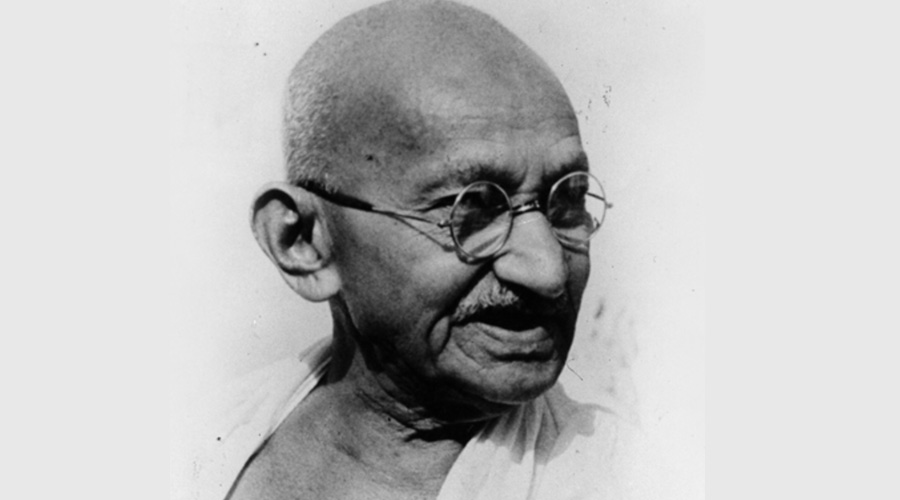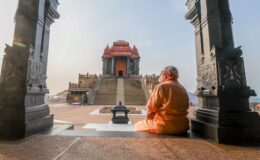Gandhi’s Last Testament on disbanding Congress Party
- By : Anirban Ganguly
- Category : Articles

Mahatma Gandhi’s restructuring of the Congress was nothing short of a radical overhaul.
When Prime Minister Narendra Modi launched the ‘Swachh Bharat” movement, it was as though the Mahatma, in whose name mere tokenism has been practiced for the last six decades, was at last beginning to be adopted by independent India. It is ironical that those who have confined the Mahatma and his legacy to two dates in the national calendar and have themselves practiced hollow tokenism all these years in his name are seeing tokenism in Modi’s action. Being habituated to circumambulate in a groove laid by a false hope-generating machine of their own making, anything real, anything alive, anything inspiring concerning the Mahatma always raises the hackles of this rootless and depressed section. It is difficult for them to internalise the fact that someone has seriously and determinedly decided to implement some of Gandhi’s most cherished programmes in our national life and to galvanise a movement on that basis.
In his last months and days it was the fate, the structure and the future goal of the Congress that seemed to have most preoccupied the Mahatma. Gandhi’s prescription for the Congress was a hard and austere image as well as goal-makeover, something that the majority power-brokers within the party were uncomfortable with. Dr. Rajendra Prasad once recalled how “shortly before his death, Mahatma Gandhi had told us that after the attainment of Swaraj, the Congress, whose objective was to attain it, should convert itself into an organization of a non-political nature whose function would be like that of a Seva Samiti working on non-party lines for the service of all.” This opinion, recalled Prasad, “was not liked by Congressmen generally.” Prasad himself noticed the degeneration in the attitude and comportement of Congressmen within a few years after independence, “We find as a matter of experience that Congressmen, generally speaking, have been losing interest in all work not connected with governmental organization and not expected to be of use at the time of elections.”
In his monumental study, “Mahatma Gandhi and Jawaharlal Nehru: a Historic Partnership – (1916-1948)”, socialist leader-intellectual Madhu Limaye, for example, discussed how in the last days, especially after his final fast, Gandhi gave “considerable thought to the future of the Congress organisation.” Gandhi, Limaye argued, laid “down the achievement of economic and social freedom and moral elevation of society as the next task of the Congress.” He was of the view, pointed out Limaye, “that the new tasks were harder than the winning of mere political independence. While these tasks were more demanding and constructive, they were at the same time less exciting and not at all spectacular.” For Congressmen who were by then “spectacularly” shaping post-independent India’s polity these demands hardly held any attraction. Whether the Congress has succeeded, in the last nearly six decades given to it, in achieving “economic and social freedom and moral elevation”, is a matter for the people of India to debate and decide – perhaps they have already given an initial verdict.
It is interesting and instructive to read some of Gandhi’s last speeches and writings in this regard and to understand how concerned he was for the fate of the Congress which, he felt, had to be streamlined, restructured and reoriented in order to maintain a balanced polity. In a “rough sketch” on the “Congress Position” in January 27, 1948, Gandhi articulated what he thought of the organisation. He saw in it “rotten boroughs leading to corruption and creation of institutions popular and democratic only in name.” What he wanted was that the members’ register of the Congress be abolished altogether and in its place “only a register of dedicated servants” be put together. “For the time being they might be city-dwellers, but most of them would have to work in the villages, and in future their ranks would be replenished from among villagers themselves.”
Gandhi also wanted the Congress to graduate from being the “servant of the nation” to becoming “Khudai Khidmatgar”, “let it now proclaim to itself and the world that it is only God’s servant – nothing more, nothing less.” The Mahatma’s warning to the Congress was as sharp as his demand from it in the changed scenario, “if it engages in ungainly skirmish for power, it will find one fine morning that it is no more.” Interestingly Gandhi thanked God that the Congress was “now no longer in sole possession of the field” of India’s national life – he seemed to have looked forward to the emergence of various alternatives.
So determined was the Mahatma to give a final shape to his views of the future Congress organization that he came back to the issue within two days. On January 29, 1948, a day Pyarelal recalled as being “cram-full with work”, Gandhi felt “utterly fagged out” complaining that his head was “reeling” and yet he pointed at the draft constitution of the Congress saying “I must finish this…I am afraid I shall have to keep late hours.” The next morning Gandhi revised the draft and gave it to Pyarelal “to go through it carefully and fill in any gaps in thought that there might be.” That evening the note, under the signature of “M.K.G”, was handed over to Acharya Jugal Kishore, then AICC General Secretary, who released it to the Press in early February 1948. The Harijan issue of 15th February 1948 carried the document as Gandhi’s “Last Will and Testament.”
The note’s contents were explosive by the standards then being set by the Congress. The Mahatma’s restructuring of the Congress was nothing short of a radical overhaul. “Though split into two,” his document began, “India having attained political independence through means devised by the Indian National Congress, the Congress in its present shape and form, i.e. as a propaganda vehicle and parliamentary machine, has outlived its use. India has still to attain social, moral and economic independence in terms of its seven hundred thousand villages as distinguished from its cities and towns” and in order to achieve these goals unhampered by the roadblocks of power-politics “…The A.I.C.C. resolves to disband the existing Congress organization and flower into a Lok Sevak Sangh.”
What followed was a great call for a second mass movement-involvement for national regeneration from bottom upwards – the Congress, metamorphosed into the Lok Sevak Sangh, was expected to spearhead it. The movement would be sustained by dedicated band of workers who would extensively and intensely connect to the villages with the panchayats forming the basic unit of this second movement.
Gandhi’s demand from the leaders of this endeavour was in line with the stringent standards that he usually set out, the leader “shall come in personal contact with every villager within his jurisdiction, he shall enroll and train workers from amongst the villagers and keep a register of all of these…he shall organize the villages so as to make them self-contained and self-supporting through their agriculture and handicrafts, he shall educate the village folk in sanitation and hygiene and take all measure for prevention of ill-health and disease among them…”
Among the other duties that the leader had to carry out undertaking name enrollment in the voter’s list, sensitising people on the rights of franchise and spreading education “from birth to death” on the lines laid down by the Nayi Taleem scheme of education. Gandhi’s leader had to surrender himself/herself to the small, basic and unglamorous tasks of national building and national empowerment – it was the only way to ensure an effective working out of Swaraj.
But such lusterless activities and programmes failed to attract or enthuse the majority of Congressmen for whom such a demand was nothing short of a hard penal labour in exile far from the land of power. Gandhi’s plan for the Congress thus, seen has his “His Last Will and Testament”, was rapidly relegated to the AICC archives or remained confined in the minds of a few Congressmen with conscience who were in any case ineffectual in the new power game.
Since Gandhi wanted to disband the Congress, the Congress abandoned Gandhi as the safest measure to perpetuate its brand of democracy and politics in the last six decades. In that brand of politics, the Mahatma’s message and “talisman” was merely meant for symbolic display and obeisance. Prime Minister Modi’s “Swacch Bharat Abhiyan”, the first in a series of efforts to re-position the Mahatma in our national life, has completely and suddenly altered that decades old status-quo. The Mahatma’s long banishment seems to be at last nearing its end!

















